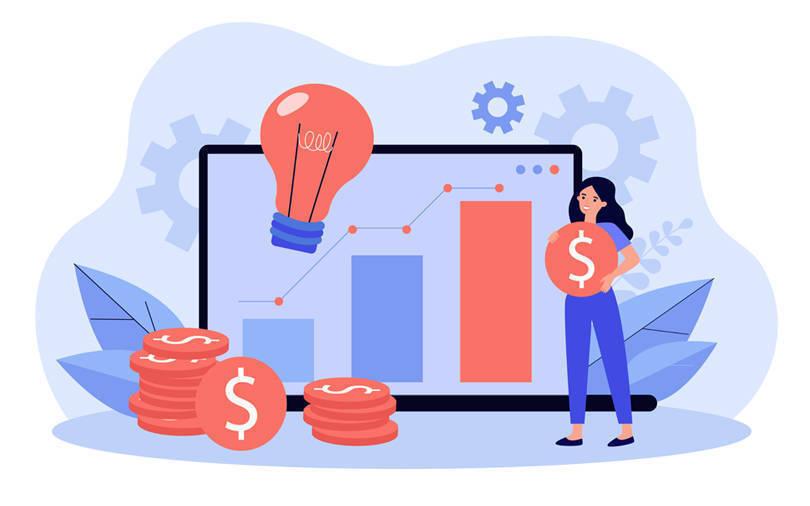 It’s ironic that unicorns, which are supposed to be extremely rare, mythical beasts, are now so commonplace. This time around, though, it is the unicorn’s namesakes or privately-held startups valued at $1 billion or more to get this label that are grabbing investor and media interest.
It’s ironic that unicorns, which are supposed to be extremely rare, mythical beasts, are now so commonplace. This time around, though, it is the unicorn’s namesakes or privately-held startups valued at $1 billion or more to get this label that are grabbing investor and media interest.
The reason is that the number of these so-called unicorns has been growing steadily over the past three years. There were eight unicorns minted in 2018, nine in 2019 and 11 in 2020. But the year 2021 has seen 42 unicorns so far, an almost four-fold jump over last year.
There have been many reasons for the mushrooming of unicorns in the past few years. The past decade has been marked by a gush of liquidity in the global banking system because of near-zero interest rates in the US and other European markets. This propelled global capital to chase higher growth rates in other markets such as India.
However, the unicorn party may face a capital pullback once the US Federal Reserve raises interest rates next year. A majority of US Federal Reserve members expect three interest rate hikes in 2022 to fight inflation, said a CNBC report on 15 December. This may partially tamp down the liquidity flow.

The last time such an event occurred was in 2013, which saw the Indian rupee depreciate by 15%, contributing to overall volatility in the Indian economy.
This begs the question: Will the US Fed’s decisions next year impact the investment ecosystem in India this time around?
“A confluence of three factors has propelled our growth story here,” said Sandeep Naik, managing director and head of India and South-east Asia at private equity firm General Atlantic, which has unicorns such as Byju’s, Unacademy, Acko and NoBroker in its India portfolio.
Naik said a part of the growth story in India was due to the “wall of global liquidity”, with investors chasing growth. In addition, some investor uncertainty in China has led to more capital being diverted towards India, boosting its capital markets.
But there are other reasons too.
“It has just been three to four years since India’s digital ecosystem has taken off, thanks to Jio making data and smartphones cheap and accessible to a wider population,” Naik said. “These consumers are transacting digitally, and companies in the space are growing at a non-linear rate,” he said, adding that all of this is happening at a time when India is producing “young, confident entrepreneurs, who are in their 20s and early 30s, with an appetite to take on more risk”.
Moreover, early investors have seen great exits, helping attract more capital into the country from other investors.
“So yes, as a result of the confluence of these three vectors and the fuel (of exits), we are at an inflection point where our digital economy is taking off. Indeed, one of these vectors is going to weaken in the near term, which is the global liquidity,” Naik said.
While there might be a little capital pullback globally, it would be relatively smaller in India as the rest of the vectors are still propelling, Naik argued.
“Will there be a correction? Yes. (But) is it going to happen in nine months? 12 months? 18 months? We don’t know. Will it impact tech companies globally? Absolutely. Will it impact tech companies in India? Yes. Is the impact going to be significantly lower in India? Absolutely as well,” he added.
“Even if the global liquidity pulls back, the money that these companies have raised on their balance sheets is real, which will help them scale their companies and create shareholder value over the next few years,” Naik said.
The money raised by the 42 unicorns this year is not a meagre amount. They cumulatively raised over $12.7 billion in fresh capital from private equity (PE) and venture capital (VC) firms, according to data compiled by VCCEdge, the data and research platform of VCCircle.
Further, the total capital raised by startups this year, including those that turned unicorns, is estimated to exceed $40 billion.
Some startups raised capital multiple times this year. As a result, startups such as Meesho, OfBusiness, Cred and Razorpay have seen their valuations jump as much as three or four times in a single year.
“This is not some phenomenon that has just happened,” said Vani Kola, managing partner at Kalaari Capital. She said that the investment surge seen in 2021 has been in the making for a while, as, over the past 15 years, VC firms have been making steady investments in building a portfolio of Indian startups.
“We are seeing that pipeline that had been built up (over the last decade). So, I don’t know if I will apply the word (funding) boom. I look at this as a promise coming,” Kola said.
Kola believes that India’s digital story has the legs to sustain on its own. “The India digital story is the most exciting story in the world today and will continue to remain so for the next decade,” she said.
By 2025, India is expected to host as many as 62,000 startups, including 100 unicorns, according to an October 2020 report prepared by TiE- Delhi, a non-profit promoting entrepreneurship, and Zinnov, a management and strategy consultant.
Other reports corroborate these numbers, with some going a step further. Early-stage venture capital fund 3one4 Capital predicts the number of startups to jump to 100,000 in 2025, with more than 150 unicorns in the same period.
The Indian startup ecosystem, already the third-largest in the world, is likely to triple its valuation to $1 trillion by 2025, according to 3one4 Capital.
Kannan Sitaram, partner with Fireside Ventures, the backer of brand aggregator startup 10Club, said new-age companies have deep consumer insights and solutions to consumer problems that incumbents have not provided.
“In our view, such companies (with strong financials) will continue to attract investor interest and get best in class valuations,” he said.
Vikram Chachra, partner with 8i Ventures, the backer of unicorn Slice, believes that the financials and valuations of new-age technology companies should be looked at differently. He added that potential revenue growth for companies is a key metric in determining their valuation.
For private tech companies, the ratio that one should look at to determine the valuation should be the ‘valuation-to-revenue’, Chachra said.
Both Chachra and Sitaram, along with many in the market, believe that the fundraising frenzy will spill over to 2022, with India minting more unicorns, thanks to the new-age companies’ strong ‘fundamentals’.
However, Chachra cautioned that as central banks across the globe start unwinding their easy-money policies, liquidity in the banking system will reduce, which could temper the investment ecosystem.
But he explained that listed markets in the US will first get affected if the US Federal Reserve starts tightening its monetary policy, and it will spill over to the Indian private markets only later.
“I would say look at where the money is going (from the US markets) as far as VC/PEs are concerned. So, one way to think about it is that 80% of the alternative assets are for China. The balance of 20% will go outside China, including India, Southeast Asia, maybe even South Korea and all of that. Even if you assume India’s share is a third, I think we can very safely assume that large chunks of allocation are going to start shifting away from China into India,” said Chachra.
The unicorn party, conclude investors, may see a capital pullback once the US Fed raises interest rates, but Indian tech startups are more likely to power through next year on the back of strong fundamentals.







